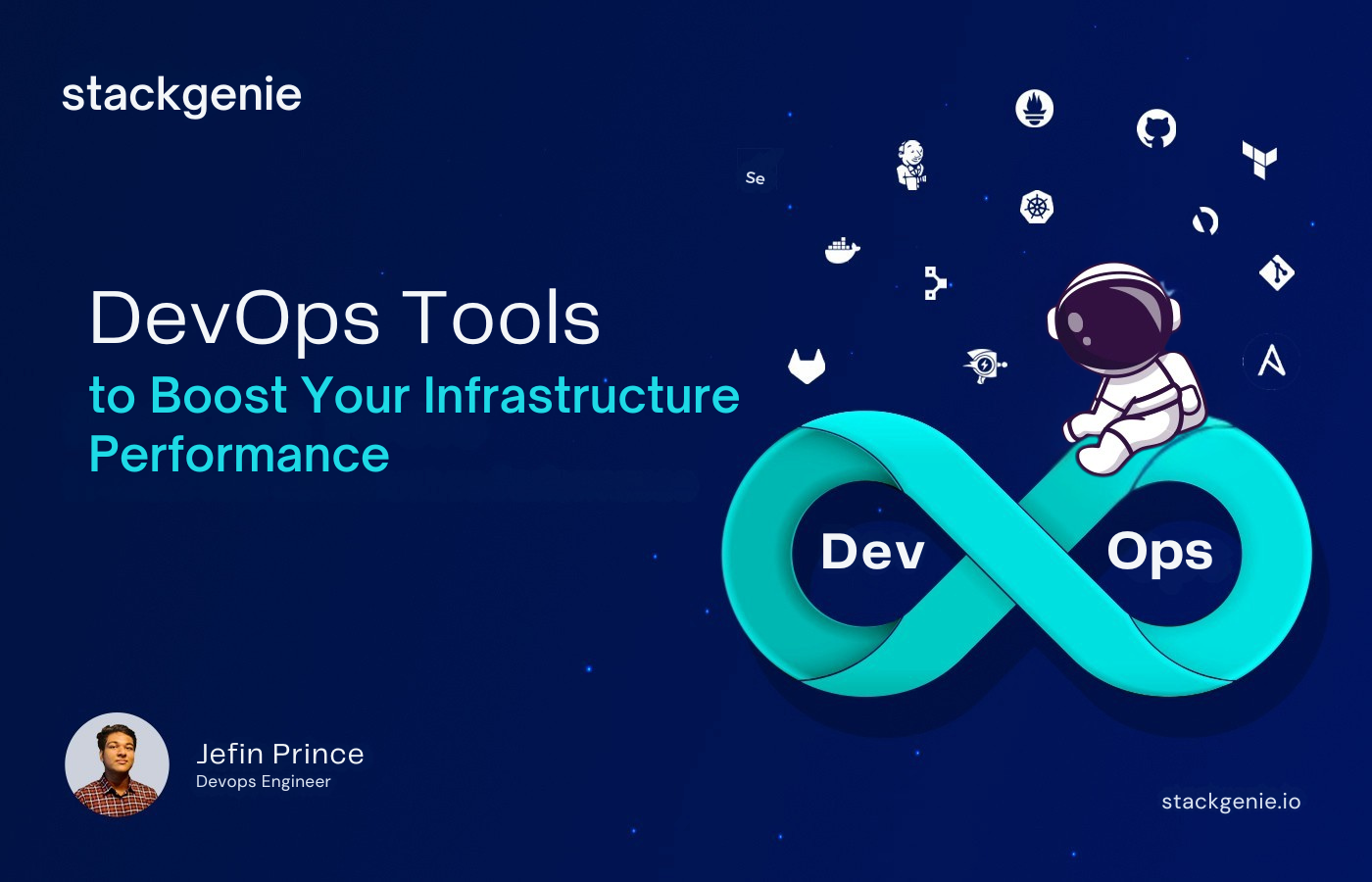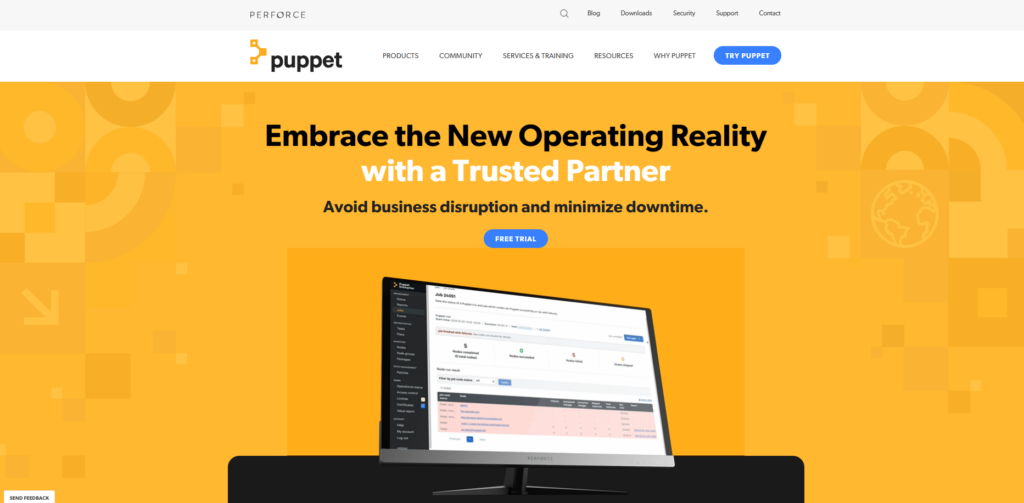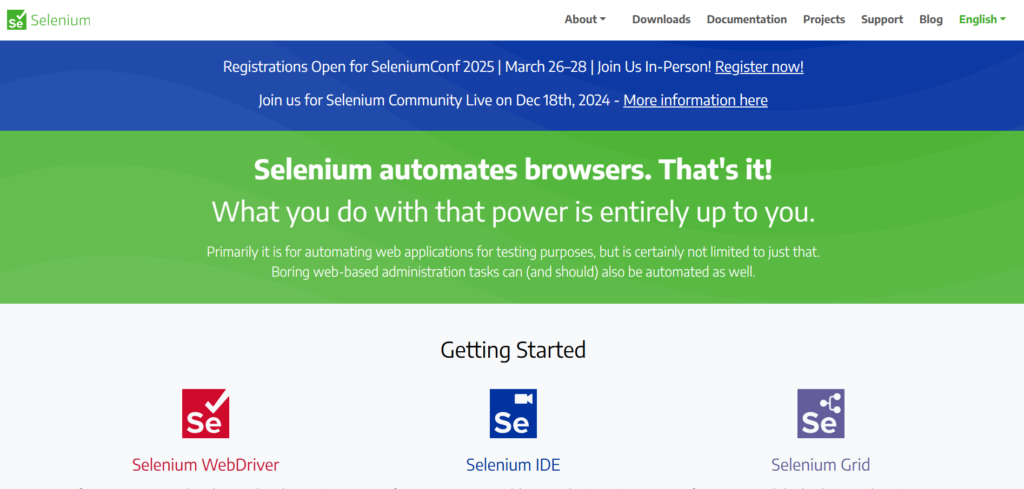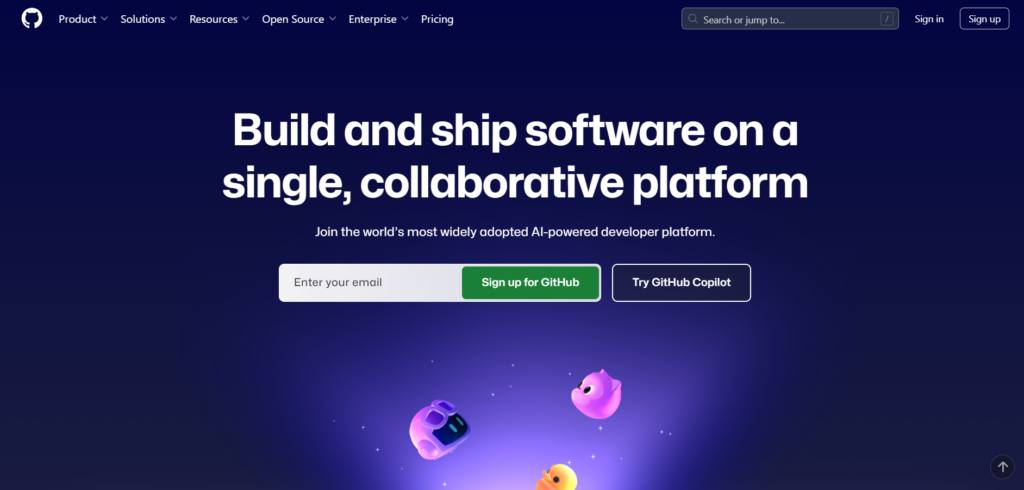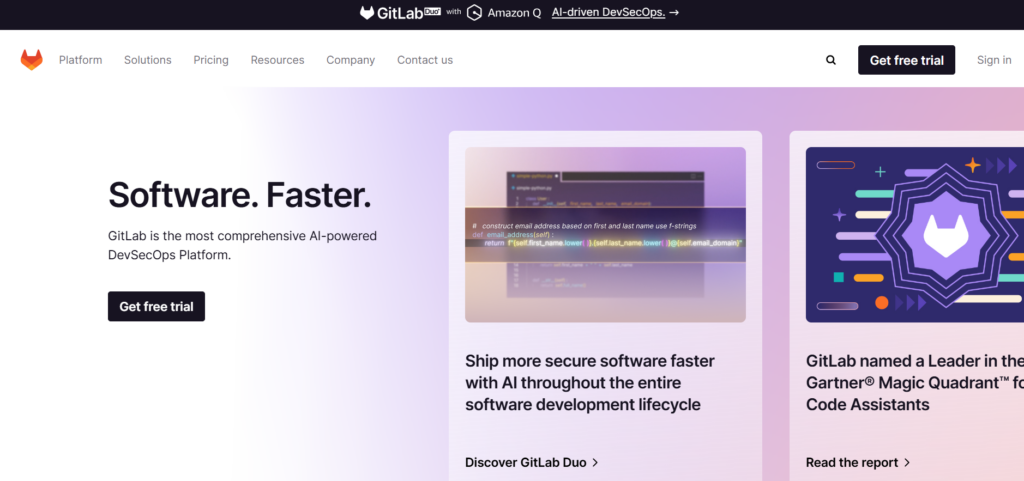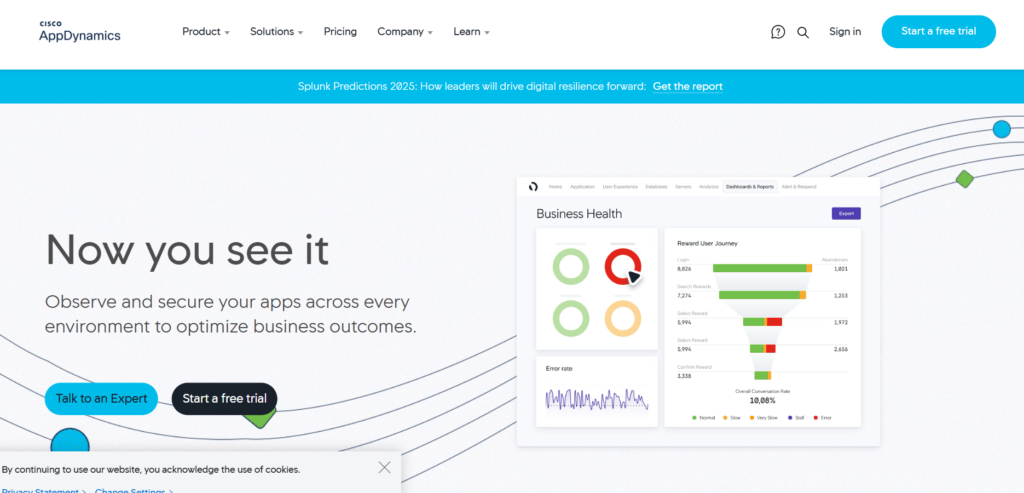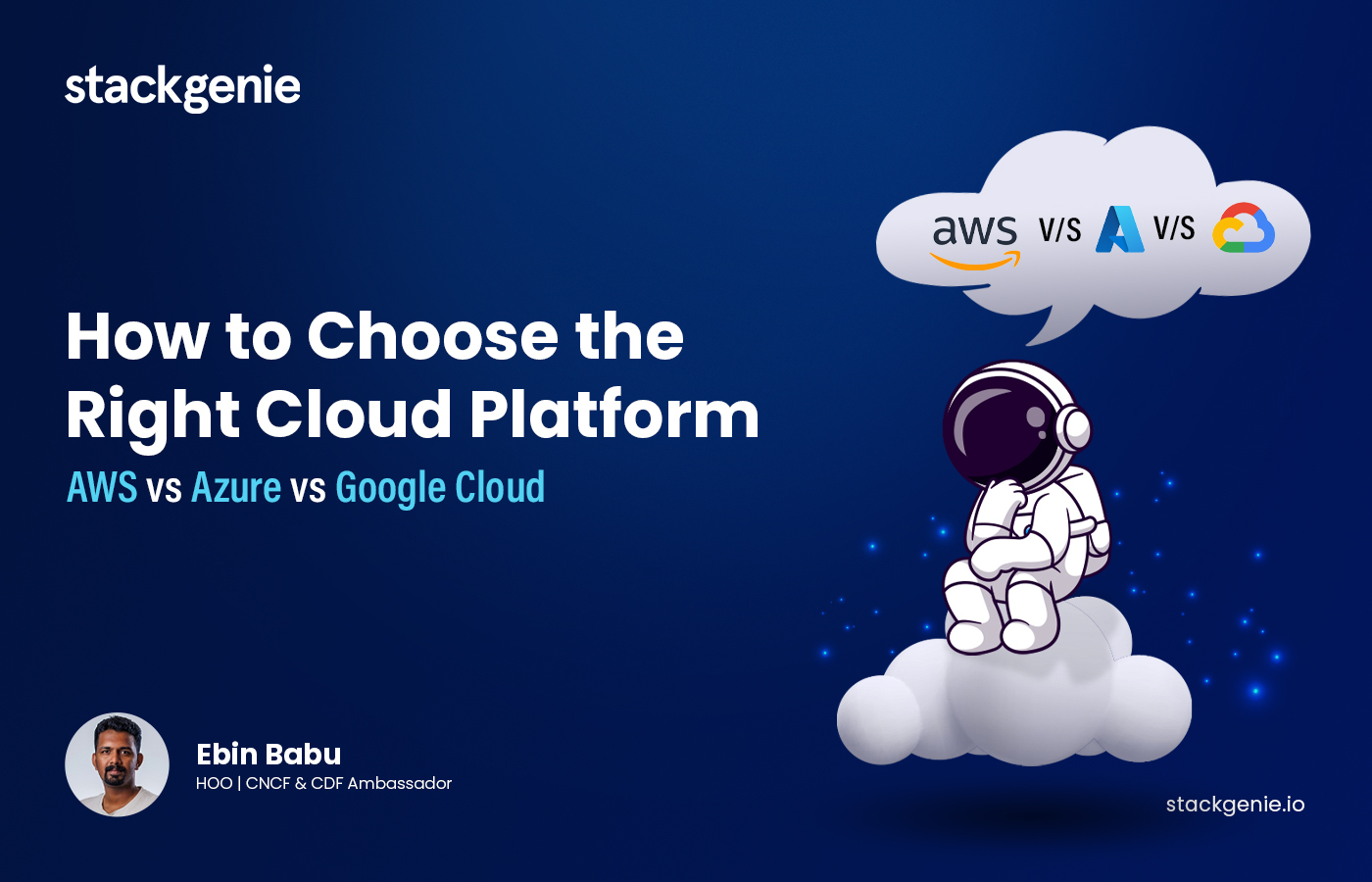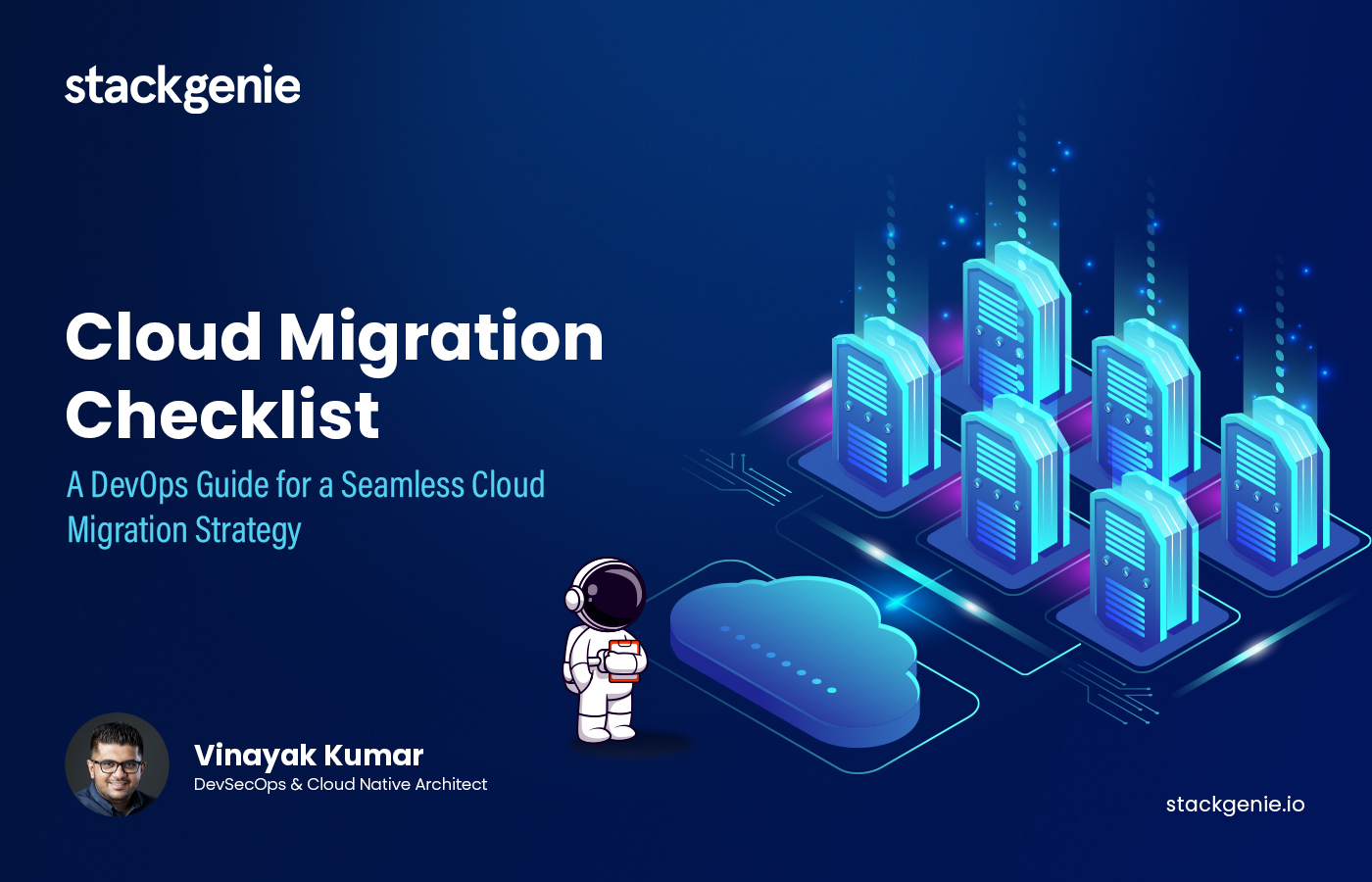DevOps tools are the backbone of modern infrastructure development, designed to bridge gaps between development and operations teams. They address critical challenges like cloud migration, optimizing billing management, or controlling traffic costs.
Whether you are just starting your DevOps journey or scaling your infrastructure to meet growing demands, these tools enable efficient, automated workflows that offer reliability. However, with countless options available, it’s essential to identify the tools that align with your goals and infrastructure needs.
In this blog, we will explore the top DevOps tools that can help optimize your infrastructure, ensuring faster, more reliable, and more secure operations for your team. From Jenkins to Kubernetes, this blog will highlight 13 powerful DevOps tools to kickstart your infrastructure development journey.
Key Factors to Consider When Choosing DevOps Tools
Before selecting the right DevOps tools for your organisation, let us check what factors can be considered.
1. Understanding Infrastructure Compatibility
Achieving the right DevOps automation requires choosing software and applications that integrate seamlessly with your existing infrastructure. Whether your infrastructure environment is on-premises, cloud-based, or hybrid, the tools should support smooth operation without compromising quality.
For example, Terraform offers excellent multi-cloud compatibility, enabling you to provision resources across AWS, Azure, or Google Cloud effortlessly.
Note: A recent survey found that 77% of organizations used DevOps in 2024 to improve their software deployment efficiency.
2. User-friendly and Scalability
As your business expands, so does the complexity of your digital infrastructure. Scalable DevOps tools like Jenkins or Bamboo can grow with your business, enabling your systems to handle increasing customer demands and workloads without compromising on performance.
Moreover, a user-friendly tool ensures higher productivity and quicker implementation of automation practices, reducing the learning curve for your employees. This strategy also enables faster implementation practices.
3. Open and Broad Integration
You must ensure that the tools you choose integrate with various DevOps pipeline technologies, such as using testing frameworks (like Selenium, Ranorex, etc.), communication platforms (like Slack or Teams), and CI/CD automation tools (like Bamboo, Jenkins, etc.).
4. Pricing vs. Licensing
When choosing DevOps tools, consider the trade-off between open-source like Ansible (cost-effective but potentially less support) and commercial options like GitLab (with licensing costs but robust support and features).
Top DevOps Tools for Infrastructure Development
Now that we have outlined the key factors for selecting DevOps tools let’s explore the top 13 tools that can elevate your infrastructure development efforts.
1. Jenkins
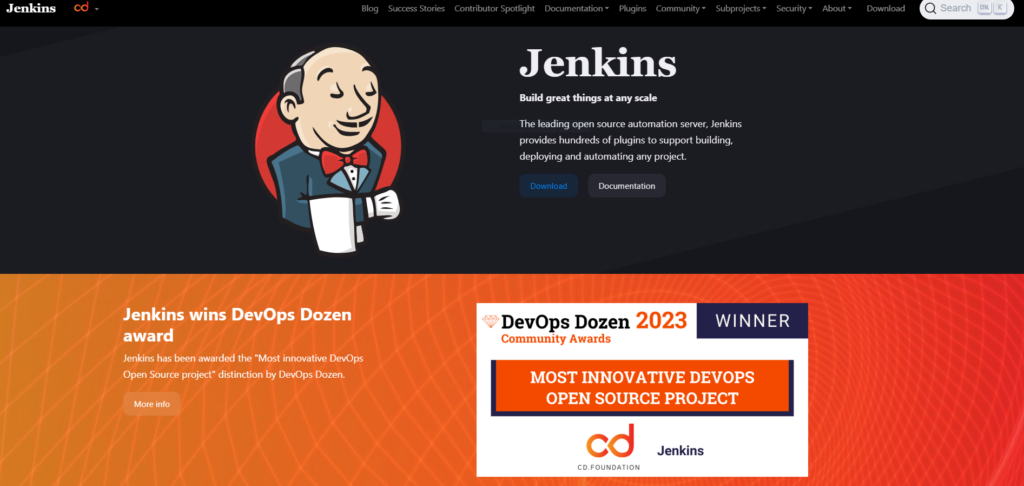 Jenkins is a Java-powered open-source platform for continuous integration and continuous delivery that automates various software development stages, including building and testing. With its extensive plugin library and compatibility with other DevOps tools, Jenkins is a versatile choice for diverse development environments.
Jenkins is a Java-powered open-source platform for continuous integration and continuous delivery that automates various software development stages, including building and testing. With its extensive plugin library and compatibility with other DevOps tools, Jenkins is a versatile choice for diverse development environments.
Key Features:
- Easy compatibility with Git, Docker, and Kubernetes.
- Centralized control, distributed execution.
- Numerous plugins to create, deliver, and automate every project.
- Diverse interfaces, including CLI, web-based GUI, and REST API.
Why use this tool? Jenkins is ideal for businesses looking to automate repetitive tasks in software development, especially if they are new to CI/CD pipelines.
Jenkins helps business owners by automating software development processes, reducing delays, and ensuring faster time-to-market for new features or products. Its compatibility with multiple systems allows smooth integration into existing infrastructure, minimizing disruption.
Pricing: Free
2. Terraform
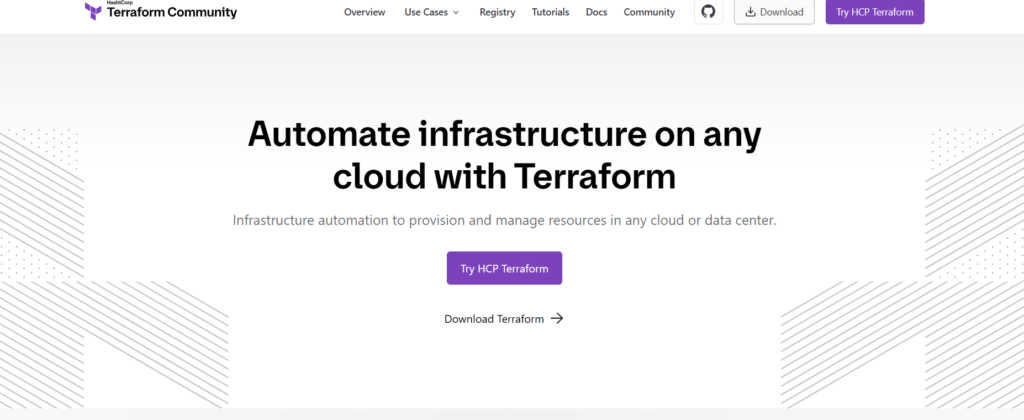 Terraform is an open-source infrastructure as code (IaC) tool that helps manage and provision cloud resources through configuration files. It allows businesses to automate infrastructure deployment, reduce manual errors, and improve consistency across multi-cloud environments.
Terraform is an open-source infrastructure as code (IaC) tool that helps manage and provision cloud resources through configuration files. It allows businesses to automate infrastructure deployment, reduce manual errors, and improve consistency across multi-cloud environments.
Key Features:
- Supports multi-cloud environments, including AWS, Azure, and Google Cloud.
- Enables version-controlled infrastructure management.
- Modular, reusable configurations for complex deployments.
- State management to track infrastructure changes.
Why use this tool? Businesses can quickly automate cloud infrastructure using Terraform’s simple syntax writing and reusable configurations.
Terraform’s modularity makes it particularly valuable for businesses scaling their cloud infrastructure. Its versioning capabilities also help ensure reliable and error-free deployments.
Pricing: Free (with paid enterprise options for advanced features and support)
3. Kubernetes
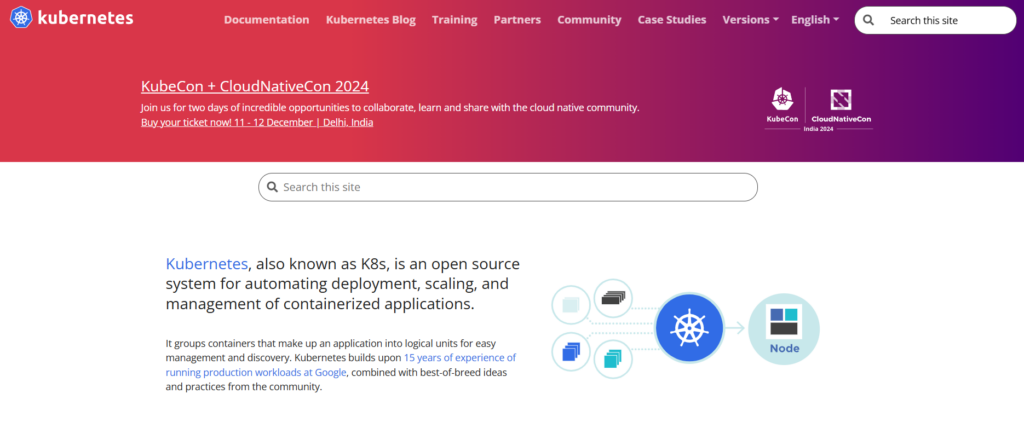 Kubernetes is an open-source container orchestration tool that automates deployment, scaling, and containerized application management. It enables businesses to scale applications by providing automated management of containerized environments.
Kubernetes is an open-source container orchestration tool that automates deployment, scaling, and containerized application management. It enables businesses to scale applications by providing automated management of containerized environments.
With features like load balancing, automated rollouts, and rollbacks, businesses can improve their system availability.
Key Features:
- Automated scaling and load balancing of containers.
- Self-healing features- automatically replace failed containers.
- Integration with Docker for container management.
- Flexible scheduling and resource allocation for optimized performance.
Why use this tool? Perfect for businesses or individuals adopting containerized applications and looking for scalable orchestration solutions.
Kubernetes is essential for businesses running microservices architectures and large-scale containerized applications, providing both operational efficiency and scalability.
Pricing: Free (with cloud providers offering managed Kubernetes services, which may incur additional costs)
Effectively manage your containerized applications and scale your infrastructure with Stackgenie’s Managed Kubernetes services. Our team of certified Kubernetes experts ensures that your infrastructure runs effectively and smoothly.
4. Docker
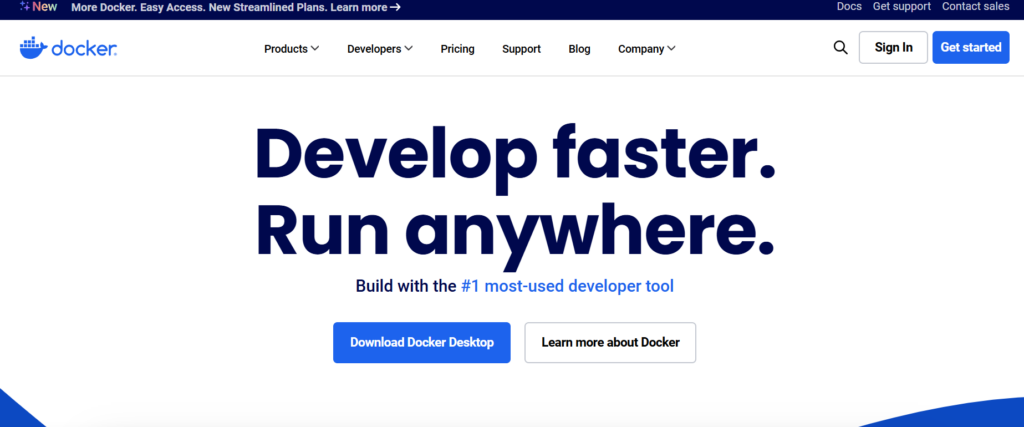 Docker is an open-source platform designed for developing, shipping, and running applications inside lightweight, portable containers. It ensures that applications can run consistently across different computing environments, simplifying deployment and scaling. Docker allows developers to provide an application with all its dependencies, ensuring it works seamlessly anywhere.
Docker is an open-source platform designed for developing, shipping, and running applications inside lightweight, portable containers. It ensures that applications can run consistently across different computing environments, simplifying deployment and scaling. Docker allows developers to provide an application with all its dependencies, ensuring it works seamlessly anywhere.
Key Features:
- Easy containerization of applications with all dependencies included.
- Simplifies deployment and scalability across multiple environments.
- Integration with Docker Swarm and Kubernetes for orchestration.
- Built-in security features for isolating containers.
Why use this tool? Docker is ideal for businesses new to containerization, as it simplifies creating and managing container-based applications with minimal effort.
Docker has become a cornerstone of DevOps tools, providing a consistent environment from development to production, improving collaboration, and accelerating the deployment process.
Pricing: Free (with paid plans offering additional features and support)
5. Git
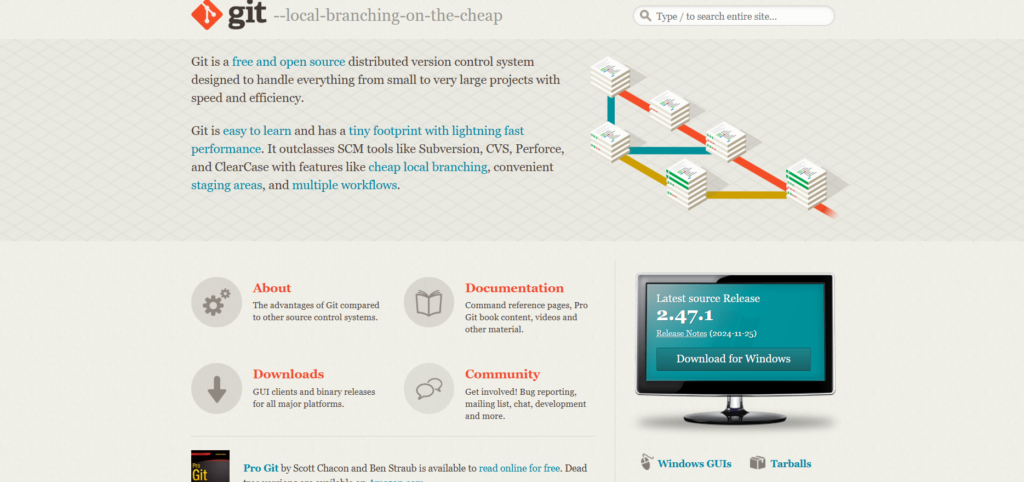 Git is a distributed version control system that allows teams to track and manage changes to code. It is widely used in DevOps to enable collaboration, versioning, and code management across multiple team members.
Git is a distributed version control system that allows teams to track and manage changes to code. It is widely used in DevOps to enable collaboration, versioning, and code management across multiple team members.
Key Features:
- Distributed version control for easy collaboration.
- Branching and merging support for parallel development.
- Offers instant performance for managing large codebases.
- Seamless integration with platforms like GitHub, GitLab, and Bitbucket.
Why use this tool? Perfect for teams and individuals looking to manage code efficiently. Git also allows collaboration for teams working in different time zones or locations.
Git enables businesses to enhance development by allowing developers to work in parallel without conflicts. It is essential for managing code versions and facilitating collaboration, which helps businesses maintain smooth project workflows and supports continuous integration.
Pricing: Free (with paid options for hosted Git repositories such as GitHub and GitLab)
6. Puppet
Puppet is a configuration management tool developed in Ruby, especially for system administrators. It simplifies your complex infrastructure workflow management by providing detailed reports and instant alerts to ensure customized performance.
Key Features:
- Allows centralized control over policy and system configurations.
- Fragments infrastructure components into smaller parts that are easier to scale.
- Provides high-level security and compliance, such as role-based access control at different levels of business infrastructure.
Why use this tool? Puppet is an excellent choice for businesses aiming to automate repetitive IT tasks (configuring servers, deploying applications, and managing system updates). It also helps you maintain consistent infrastructure performance by managing complex configurations.
Puppet is a valuable DevOps tool for businesses looking to simplify and standardize IT management. It uses a unique configuration language to organize processes into manageable modules, ensuring system consistency.
When operating on a server-client model, Puppet enables centralized control, allowing businesses to scale and maintain their IT infrastructure efficiently.
Pricing: Free (with paid enterprise options)
7. Selenium
Selenium is a crucial DevOps tool for businesses that require reassurance for the effortless performance of their web applications. With its extensive browser compatibility, it allows businesses to automate testing and web-based admin tasks, ensuring their applications function flawlessly.
This efficiency leads to faster time-to-market, improved customer satisfaction, and reduced costs associated with manual testing.
Key Features:
- Selenium WebDriver– offers robust, browser-based regression testing.
- Selenium IDE- enables simple record-and-playback functionality.
- Selenium Grid- provides scalable testing across multiple machines and environments.
Why use this tool? Selenium is perfect for analysts, offering test automation for web applications. It supports multiple browsers and platforms with lower learning curves.
Selenium easily integrates with various development tools, providing a single dashboard for managing testing and performance tasks. This makes it an essential tool for web application scaling, where comprehensive testing is a key advantage.
Pricing: Free
8. GitHub
GitHub is a widely used version control platform that allows businesses to build, manage, and collaborate on software projects. It enables teams to track changes, iterate on code, and quickly recover versions to resolve errors and incidents.
Key Features:
- Robust version control and collaboration for development teams.
- Seamless integration with CI/CD pipelines for automation.
- Powerful branching and merging capabilities for parallel development.
- Extensive support for open-source projects and community contributions.
Why use this tool? GitHub is a great choice for managing code in the cloud, working together as a team, and streamlining CI/CD workflows.
GitHub is the most essential among the other DevOps tools. It provides streamlined code management and collaboration, ensuring faster and more efficient software development.
Pricing: Free (with paid plans offering and enterprise support)
9. Ansible
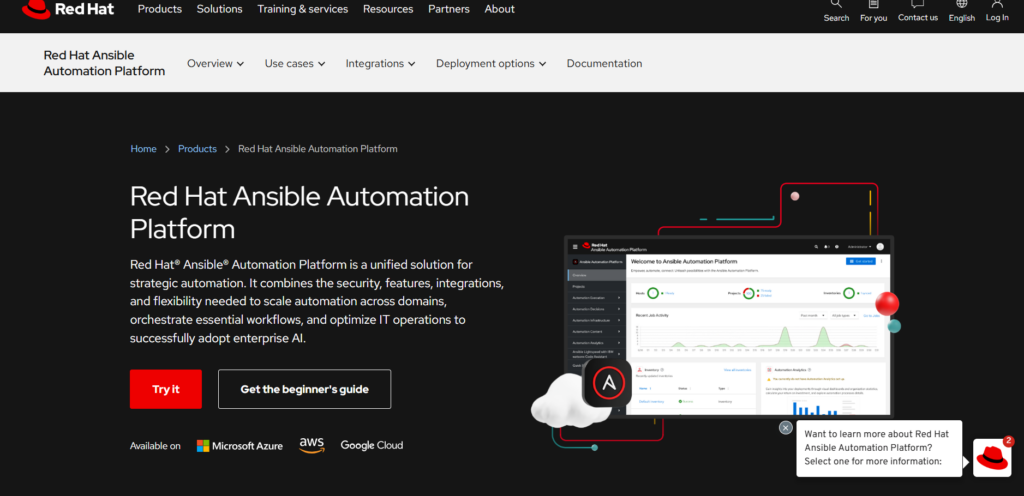 Ansible is an open-source configuration management, orchestration, and automation tool that is significantly used in DevOps workflows. Built by Red Hat, Ansible allows businesses to automate repetitive tasks, manage complex deployments, and simplify infrastructure management.
Ansible is an open-source configuration management, orchestration, and automation tool that is significantly used in DevOps workflows. Built by Red Hat, Ansible allows businesses to automate repetitive tasks, manage complex deployments, and simplify infrastructure management.
Key Features:
- There is no need to install additional software on the target systems; it uses SSH to connect to machines.
- Manage your infrastructure through playbooks (YAML files) describing the desired state.
- Works seamlessly with Docker, Kubernetes, AWS, Azure, and other popular tools.
- Built-in security features and reliance on existing SSH keys ensure a secure environment.
- Ensures changes are only applied when necessary, avoiding repeated configurations.
Why use this tool? Ansible is ideal for businesses seeking a straightforward tool to automate configurations without requiring prior installations on target systems.
Its agentless architecture is one of its standout features, requiring no additional software installation on managed systems, significantly reducing complexity and overhead.
Pricing: Free and Paid both (Powered by Red Hat)
10. GitLab
GitLab is a DevOps automation platform that offers a complete lifecycle for software development, from source code management to CI/CD pipelines, security testing, and deployment.
Key Features:
- Built-in Git repository management with features like code review, version control, and branching.
- Integrates security scans (SAST, DAST, and dependency scanning) into the CI/CD pipeline to identify vulnerabilities early.
- Built-in project management tools like Kanban boards, milestones, and issue tracking.
- Works well with Kubernetes, Docker, Terraform, and monitoring tools like Prometheus.
- It can be deployed on your infrastructure or used as a SaaS offering on GitLab.com.
Why use this tool? GitLab is ideal for businesses seeking an all-in-one platform to manage version control and security testing from a single interface.
GitLab is known for its robust integration of development and operations in a single interface, promoting team collaboration and efficiency. It allows teams to run all objectives from Planning to Security, making it highly favorable among other DevOps tools.
Pricing: Offers both a free and paid version.
11. Prometheus
Prometheus is an open-source application performance monitoring and alerting tool that provides insights into system behavior. Developed by SoundCloud and later donated to the Cloud Native Computing Foundation (CNCF), Prometheus is widely used for monitoring containerized applications and distributed systems.
Key Features:
- Enables complex queries for analyzing time-series data.
- Stores data with labels, making it easy to filter and aggregate metrics.
- Prometheus has an integrated Alertmanager to route alerts via email, Slack, or other tools.
- Prometheus pulls metrics from configured endpoints, reducing overhead on the monitored systems.
- Monitors hardware and operating system metrics like CPU, memory, and disk usage.
Why use this tool? Prometheus is an excellent choice for monitoring containerized environments and distributed systems. All the credit goes to its straightforward setup and label-based filtering.
Prometheus specializes in real-time monitoring and time-series data collection. It is also capable of handling millions of metrics across highly distributed environments.
Pricing: Free (but for better hosting support, try Graffana Cloud’s paid enterprise offerings)
12. Appdynamics
Appdynamics is a leading application performance monitoring (APM) tool that provides real-time insights into the health and performance of applications. It goes beyond basic monitoring by offering deep diagnostics, analytics, and end-to-end visibility across the application stack, making it a valuable tool for enterprise environments.
Key Features:
- Automatically maps application dependencies, helping teams identify and troubleshoot bottlenecks.
- Uses AI-powered baselines to detect and flag performance anomalies proactively.
- Pinpoints issues down to the line of code, enabling faster resolution of bugs and performance issues.
- Provides intuitive and customizable dashboards for teams to track KPIs and SLAs instantly.
- Works with DevOps tools like Jenkins, PagerDuty, and ServiceNow to streamline workflows.
Why use this tool? AppDynamics is ideal for organizations that prioritize user experience and application performance monitoring. This DevOps tool is specially engineered for those new to advanced diagnostics and AI-driven insights.
Pricing: Offers a tiered pricing model tailored to business needs.
13. Raygun
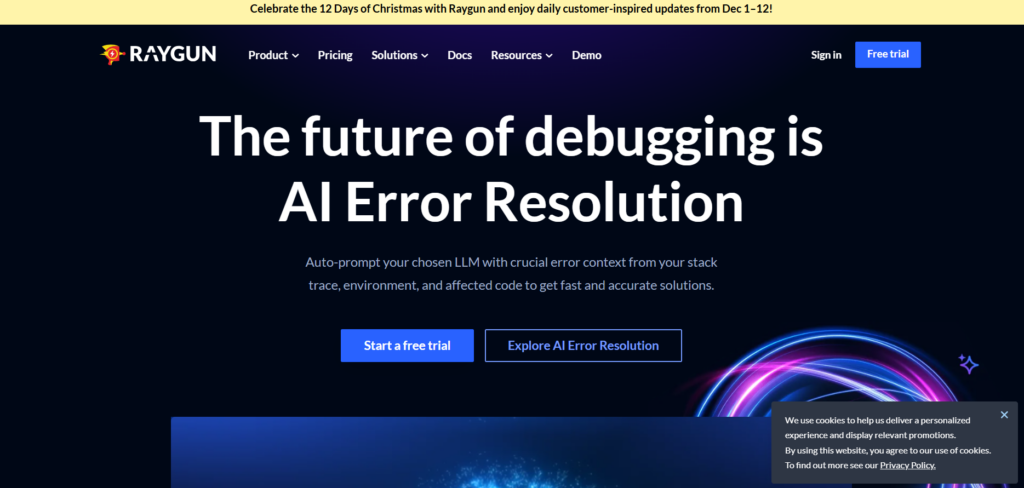 Raygun is a performance monitoring and error tracking tool designed to help businesses quickly improve their applications by identifying and resolving performance bottlenecks and bugs. Its monitoring capabilities provide actionable insights into crashes and errors, enabling faster resolutions.
Raygun is a performance monitoring and error tracking tool designed to help businesses quickly improve their applications by identifying and resolving performance bottlenecks and bugs. Its monitoring capabilities provide actionable insights into crashes and errors, enabling faster resolutions.
Key Features:
- Provides detailed stack traces, breadcrumbs, and metadata to help developers debug quickly.
- Supports multiple languages and platforms, including JavaScript, .NET, iOS, Android, etc.
- Tracks end-user experiences, including page load times, performance issues, and geographic performance variations.
- Sends alerts via email or third-party tools like PagerDuty and Opsgenie.
- Filter errors by version, environment, or affected users for targeted troubleshooting.
Why use this tool? Raygun is an excellent choice for teams or individuals looking for an intuitive solution to monitor application performance and address bugs.
Raygun ensures improved application reliability, protects customer trust, and reduces downtime, which can save costs and enhance business growth.
Pricing: Offers flexible pricing plan.
Quick Overview Table
| Tool | Primary Use | Pricing |
| Jenkins | Automating CI/CD processes and integrating with diverse tools | Free |
| Terraform | Managing and provisioning cloud infrastructure as code (IaC) | Free/Enterprise |
| Kubernetes | Orchestrating and scaling containerized applications | Free/Managed Options |
| Docker | Simplifying containerization for consistent deployments | Free (with paid options) |
| Git | Version control for tracking and managing code changes | Free |
| Puppet | Standardizing and automating infrastructure configurations | Free (with enterprise plans) |
| Selenium | Automating web application testing across browsers | Free |
| GitHub | Cloud-based platform for code collaboration and management | Free (with paid options) |
| Ansible | Agentless automation for configurations and complex deployments | Free and Paid (Red Hat) |
| GitLab | Comprehensive platform for version control, CI/CD, and security | Free/Paid |
| Prometheus | Monitoring and alerting for distributed systems and containers | Free |
| AppDynamics | Deep diagnostics and real-time application performance monitoring | Paid (tiered pricing) |
| Raygun | Tracking and resolving performance issues and application errors | Paid (flexible plans) |
Driving Business Efficiency Through Scalable DevOps Tools
Adopting the right DevOps tools is key to streamlining operations and accelerating product delivery. As infrastructure complexity grows, scalable tools like Jenkins, Kubernetes, and Terraform help automate workflows, reduce manual tasks, and improve team collaboration.
These tools do more than enhance efficiency—they drive innovation and help businesses stay ahead of evolving technical demands. Choosing the right DevOps tool is an investment in your infrastructure’s scalability, ensuring you remain competitive as your business grows.
At Stackgenie, we assist businesses in selecting and implementing the most effective DevOps tools tailored to their unique needs. From automating deployments to optimizing cloud resources and enhancing system reliability, we offer Managed DevOps services customized to amplify your business impact.
Ready to elevate your infrastructure? Contact Stackgenie for consulting and customized solutions that will drive performance and streamline workflows.
FAQs
1. What are the trade-offs between open-source and commercial DevOps tools?
Open-source tools offer flexibility and cost-effectiveness but require technical expertise, while commercial tools provide support and advanced features but may have higher costs and vendor dependency.
2. How can DevOps tools help improve infrastructure performance through automation?
DevOps tools automate repetitive tasks, optimize workflows, and reduce human errors. This boosts infrastructure performance by ensuring faster deployments, efficient resource management, and consistent environment configurations.
3. How can the choice of DevOps tools influence the culture and collaboration within my development team?
The right DevOps tools thrive on transparency, streamline workflows, and enhance collaboration, enabling teams to share insights, track progress, and resolve issues more efficiently, promoting a cohesive team culture.
4. What role do DevOps tools play in ensuring security within a CI/CD pipeline?
DevOps tools integrate security checks, vulnerability scanning, and compliance monitoring into CI/CD pipelines, enabling early detection of issues and ensuring secure, reliable, and compliant software releases.
